Creating Categories to Combat Cyberbullying
A journey through 40+ research papers, heated debates, and yellow sticky notes
The Search That Started It All
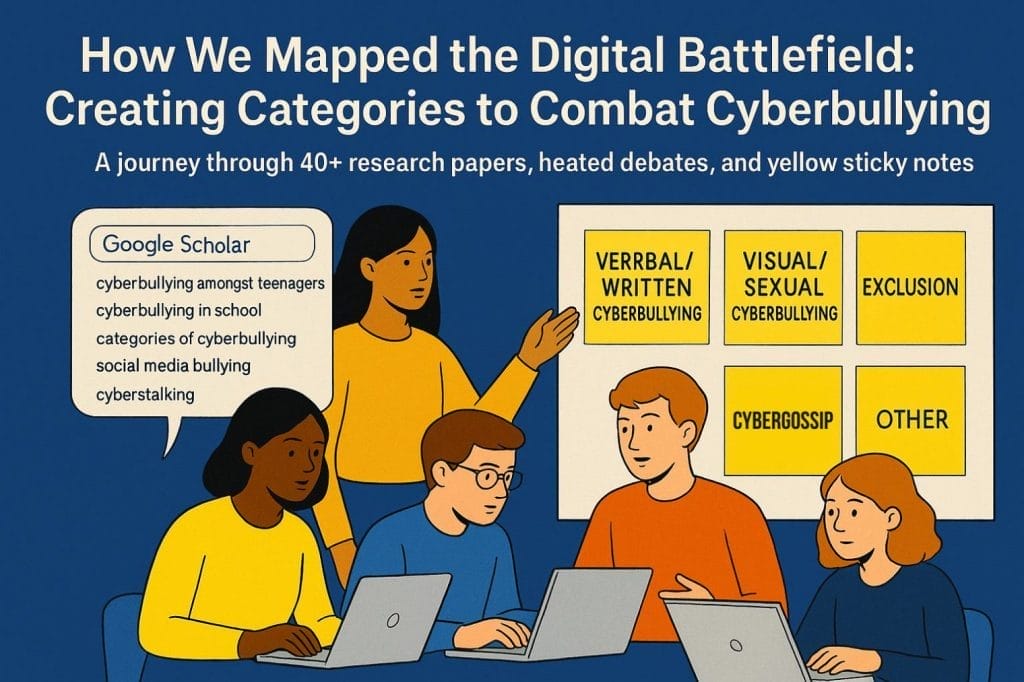
Picture this: A group of Impact Fellows, armed with laptops and determination, diving into the murky waters of cyberbullying research. Our mission? To create a framework that could help AI systems recognize and categorize the many faces of digital cruelty affecting Gen Z and Gen Alpha.
But where do you even begin?
Precious, one of our fellows, started with what seemed like a simple Google Scholar and PubMed search. Her fingers flew across the keyboard as she typed: “cyberbullying amongst teenagers,” “cyberbullying in school,” “categories of cyberbullying,” “social media bullying,” “cyberstalking.” The results? Overwhelming. Hundreds of papers, each claiming to have found a piece of the puzzle.
“I realized quickly that not all research is created equal,” Precious reflected during one of our sessions. “Some papers were from 2010, talking about MySpace. Others focused on 30-year-olds. We needed something current, something real.”
Setting the Rules of Engagement
Before we could dive deeper, we needed ground rules. Like detectives building a case, we established our criteria:
- Time matters: Only research from 2019-2025 (because TikTok didn’t even exist when some older studies were done)
- Age matters: Focus on 10-19 year olds (the ones actually living this reality)
- Quality matters: Peer-reviewed only (no random blog posts masquerading as research)
- Evidence matters: Each category needed at least 2 academic citations to make the cut
This wasn’t just busy work. It was about ensuring that whatever categories we created would stand up to scrutiny—both from researchers and from the young people whose lives we hoped to impact.
The Great Sorting: Intent vs. Method
As we waded through 40+ papers, a pattern emerged. Some researchers focused on how the methods bullies use (screenshots, fake accounts, group exclusion). Others focused on the why—the intent behind the cruelty (humiliation, control, revenge).
The debate got heated. Should we categorize by platform? By severity? By psychological impact?
Then came the breakthrough: What if we organized by the nature of the harm itself?
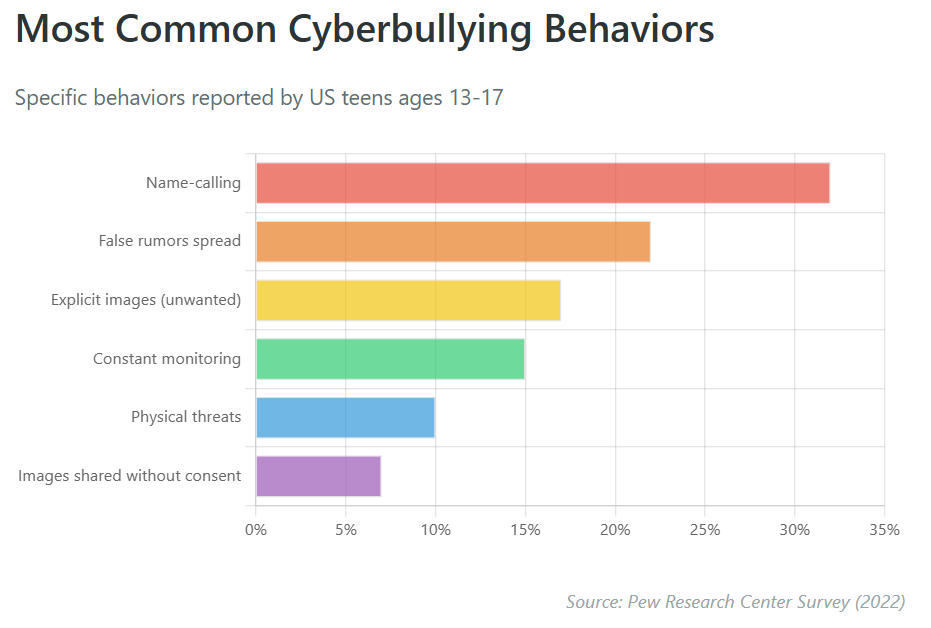
The Categories That Emerged
After weeks of reading, debating, and voting on our now-famous Miro board (those yellow sticky notes became our battlefield), four main categories emerged from the chaos:
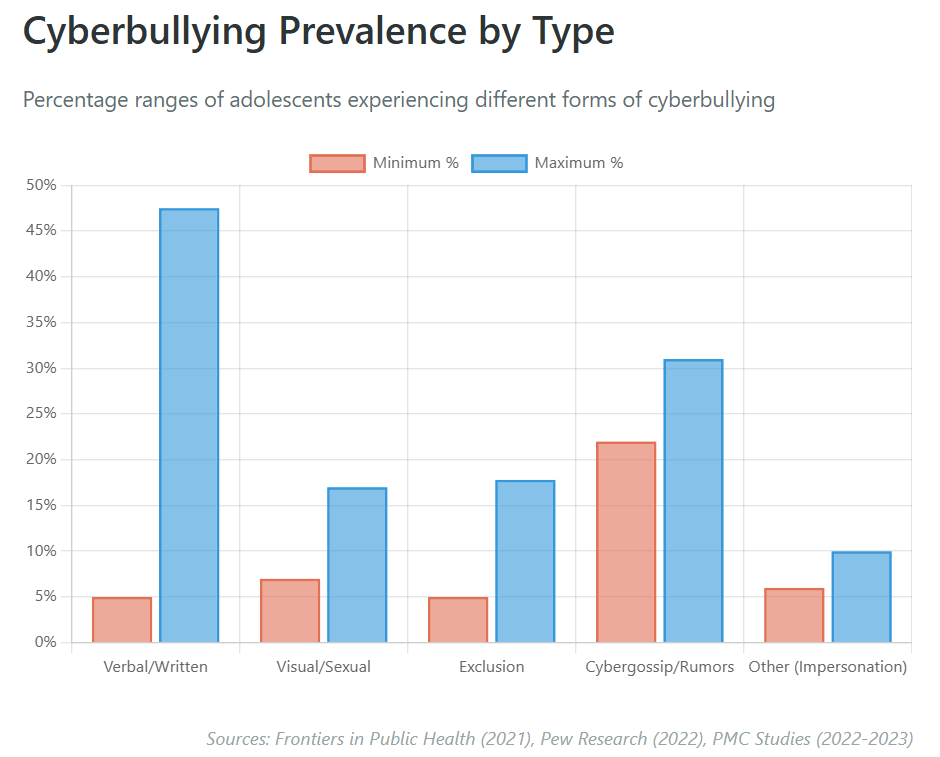
Verbal/Written Cyberbullying: When Words Become Weapons
What we found: This was the heavyweight champion of cyberbullying research. Nearly every study we examined had something to say about verbal aggression online.
The evidence: Studies from Frontiers in Public Health (2021) and PMC (2022) painted a disturbing picture. Words aren’t just words in digital spaces—they’re permanent, shareable, and amplifiable.
Real-world translation:
- Flaming: That moment when a disagreement turns into a public roasting session.
- Harassment: When “just one more message” becomes 50 messages a day.
- Denigration: Spreading lies faster than the truth can catch up.
- Outing: Sharing someone’s private struggles for public entertainment.
- Racist attacks: When hate speech hides behind screen names.
Visual/Sexual Cyberbullying: The Image That Won’t Disappear
What shocked us: The rise of visual platforms created entirely new forms of harm that didn’t exist a decade ago.
The evidence: Multiple studies, including comprehensive reviews in PMC (2022), showed how images create lasting digital footprints of humiliation.
The horror stories:
- Deepfakes: When AI turns anyone into a weapon against themselves.
- Screenshot shaming: Private moments becoming public ammunition.
- Meme-based bullying: When someone’s worst moment becomes everyone’s joke.
Exclusion: The Silence That Screams
The revelation: Sometimes the cruelest bullying involves no words or images at all—just deliberate, coordinated isolation.
The research: Studies from PMC (2022) and (2023) revealed how digital exclusion creates invisible wounds that traditional anti-bullying programs miss entirely.
How it happens:
- Creating “everyone except Sarah” group chats
- Mass unfollowing campaigns
- Public events where one person is conspicuously not invited
- The modern “silent treatment” amplified by technology
Cybergossip: The Whisper Network Goes Digital
studies, “gossip keeps coming up, but it’s different from direct harassment.”
The pattern: Research, including a longitudinal study on “Mechanisms of Moral Disengagement in the Transition from Cybergossip to Cyberaggression” (2021), showed how digital gossip operates as its own category—not quite exclusion, not quite verbal assault, but a corrosive force nonetheless.
The reality:
- Rumors spreading through DM chains
- “Did you hear about…” messages in group chats
- Screenshot circles where people’s private lives become entertainment
- The transition from “just gossip” to coordinated harassment
Other: The Shape-Shifters
Why this matters: Technology evolves faster than research. New platforms create new forms of harm. This category acknowledges our limitations.
What lives here:
- Character impersonation: When someone steals your digital identity
- Hybrid attacks: Combining multiple forms of bullying
- Platform-specific harassment: Whatever horror TikTok’s algorithm enables next
- The unknown: Forms of cyberbullying we haven’t even imagined yet
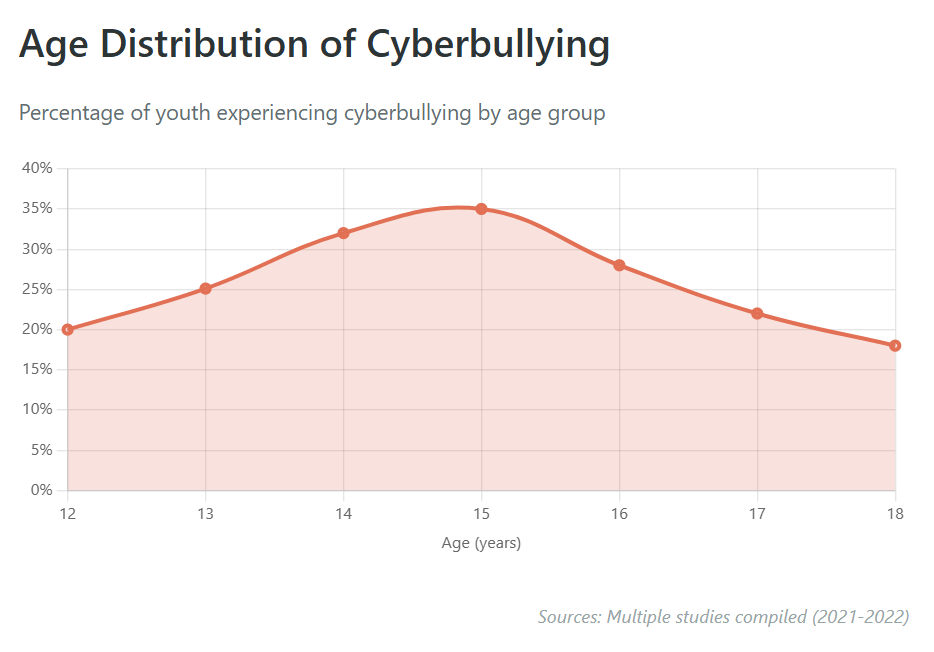
The Democracy of Decision-Making
The voting process became a masterclass in collaborative research. Our Miro board transformed into a war room of yellow sticky notes, each representing hours of reading, thinking, and debating.
Some categories had unanimous support. Others sparked fierce debate. “Is catfishing its own category or part of impersonation?” “Where does algorithmic harassment fit?” “What about AI-generated harassment?”
In the end, we voted. Not because voting makes something true, but because it forces us to defend our positions, cite our sources, and think critically about real-world applications.
What This Means for the Future
These aren’t just academic categories. They’re tools for:
- Training AI systems to recognize different types of harm
- Helping young people name what’s happening to them
- Guiding interventions that match the specific type of bullying
- Tracking evolution as new platforms create new problems
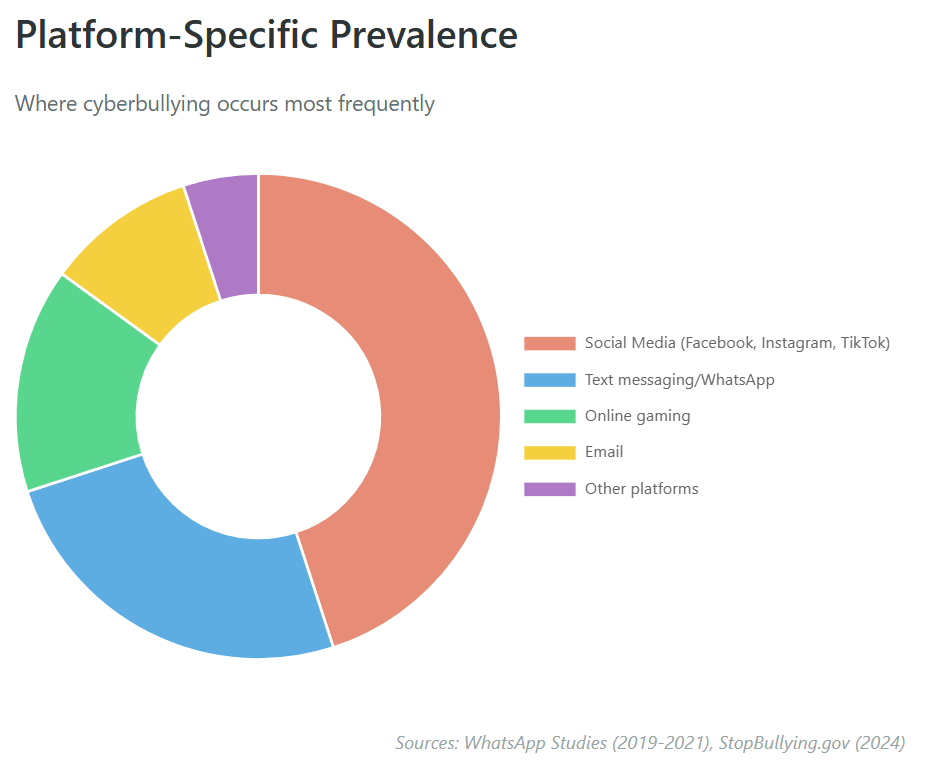
Call to Action
Understanding cyberbullying’s many forms is the first step toward creating safer digital spaces for our youth. We invite educators, parents, researchers, and young people themselves to:
- Use this framework to better identify cyberbullying
- Share feedback on categories we may have missed
- Join our efforts to build more comprehensive detection tools → You can help us by filling in this Google Form: https://forms.gle/5LxT5ixSTkQyJgqo9
- Support youth experiencing any form of digital harassment
The Work Continues
As I write this, our fellows are diving deeper into prevalence data. How common is each type? Which platforms enable which categories? How do these patterns shift across cultures and age groups?
The yellow sticky notes on our Miro board represent more than research papers—they represent real kids facing real harm in digital spaces. Every category we defined, every subcategory we detailed, connects to someone’s story of pain, resilience, or both.
We started with a simple question: How do we categorize cyberbullying?
We’re ending with a more complex understanding: These categories aren’t just labels. They’re a map for navigating the digital battlefield our youth face every day. And with this map, maybe—just maybe—we can help them find their way to safety.

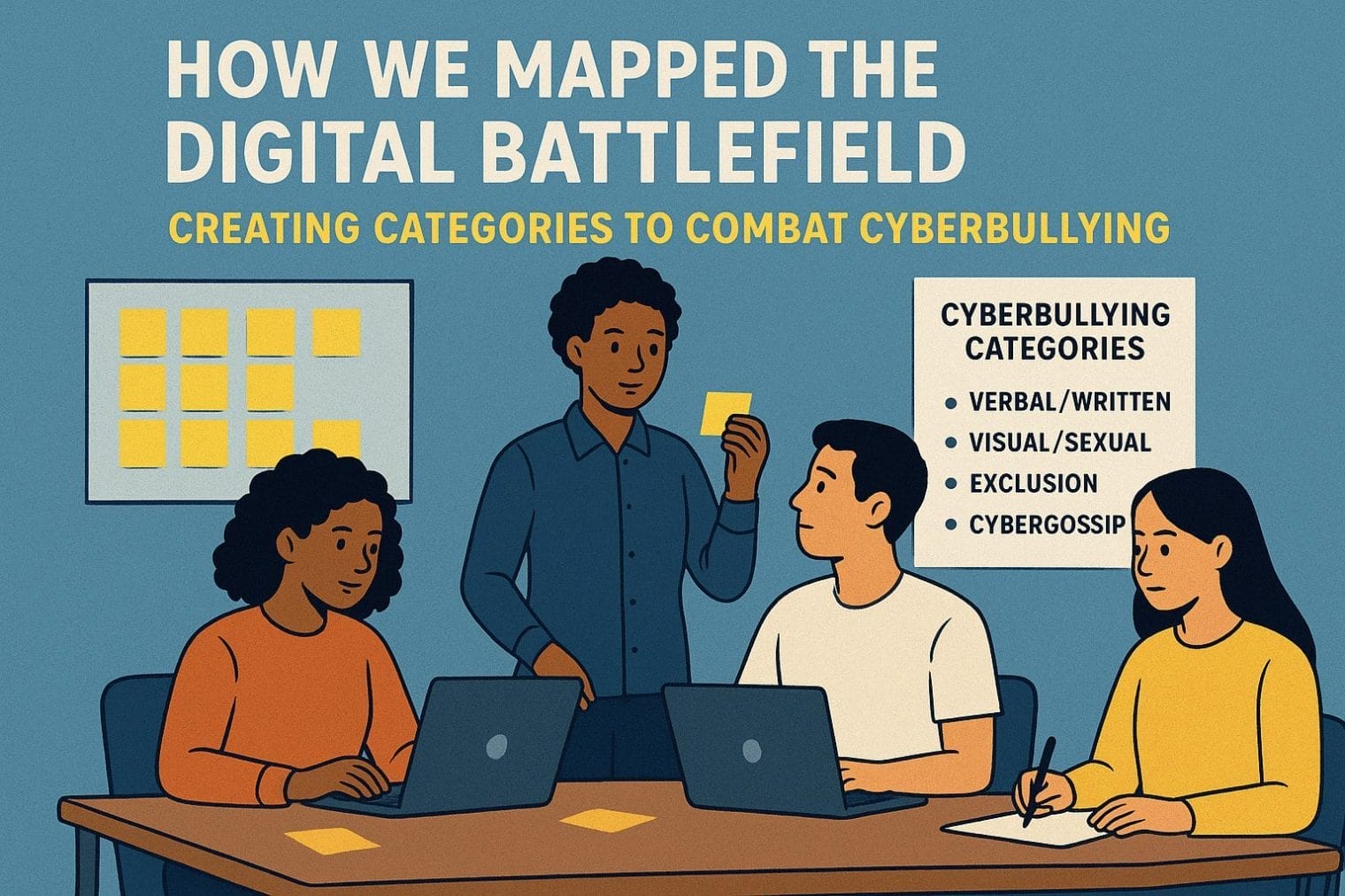

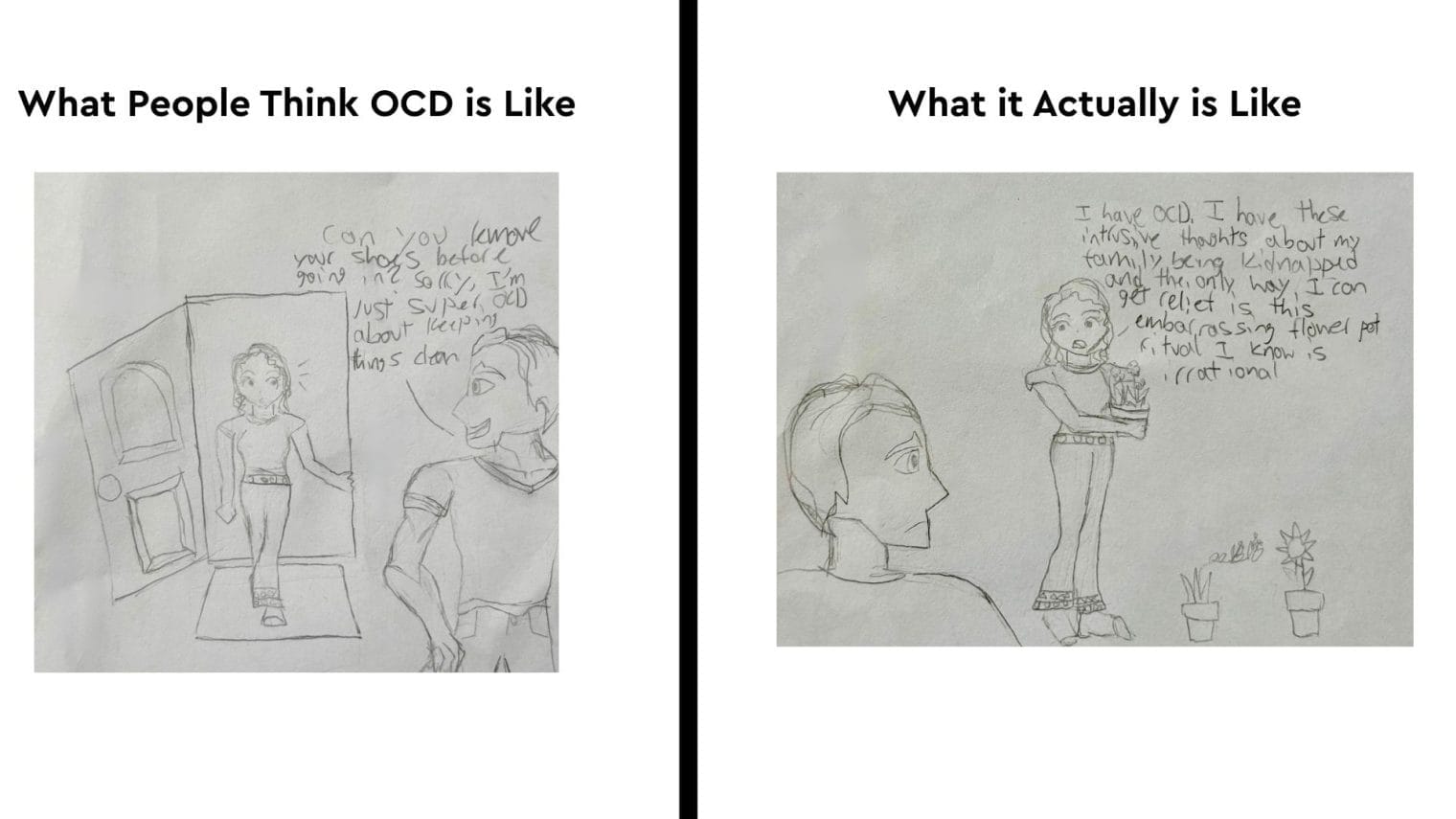
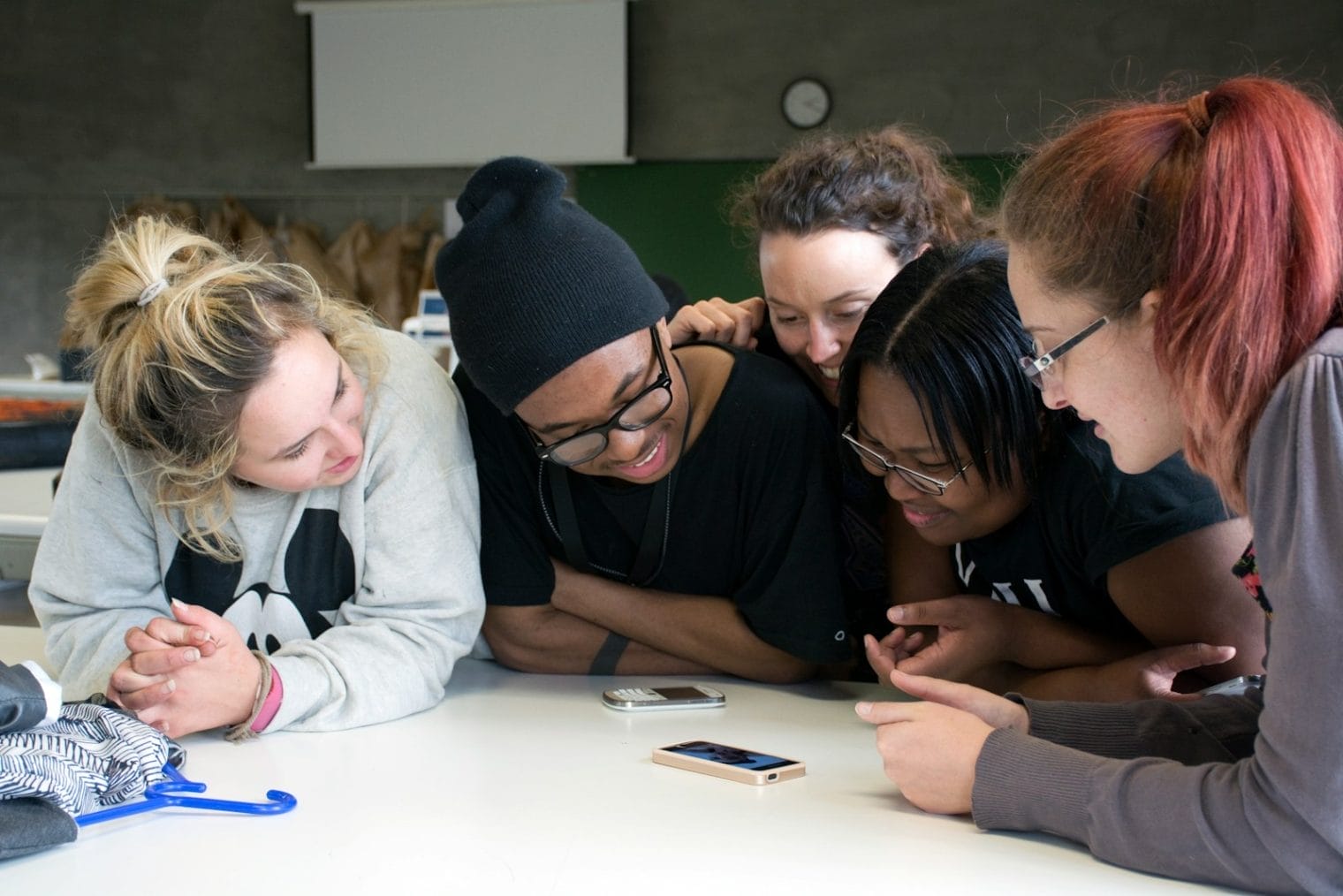
Leave a Reply